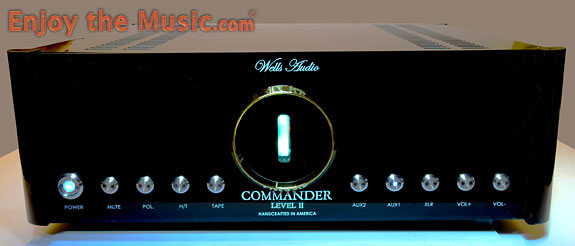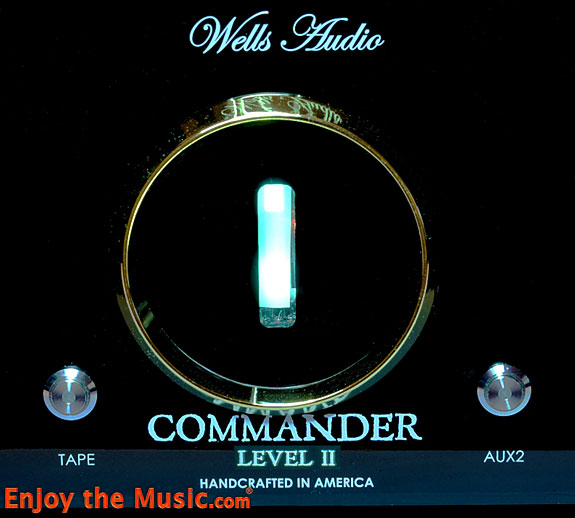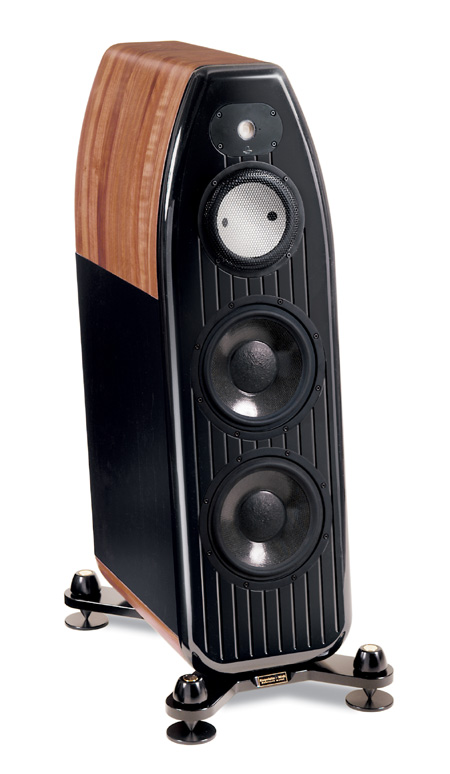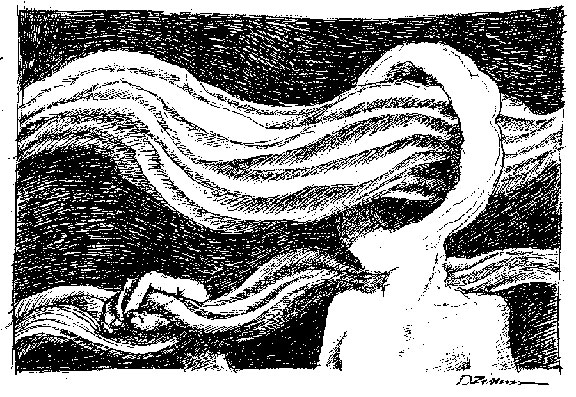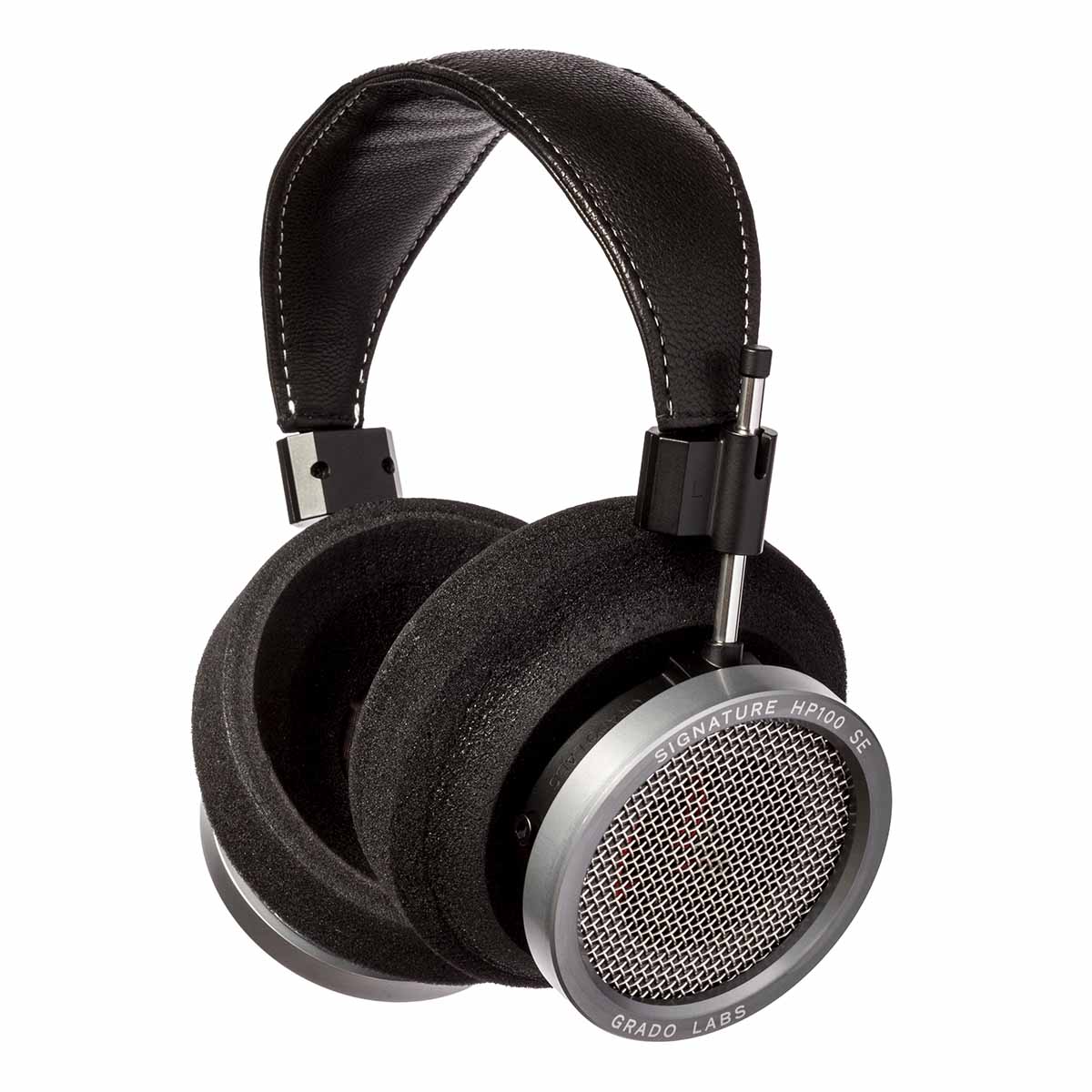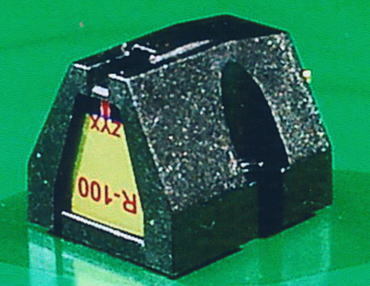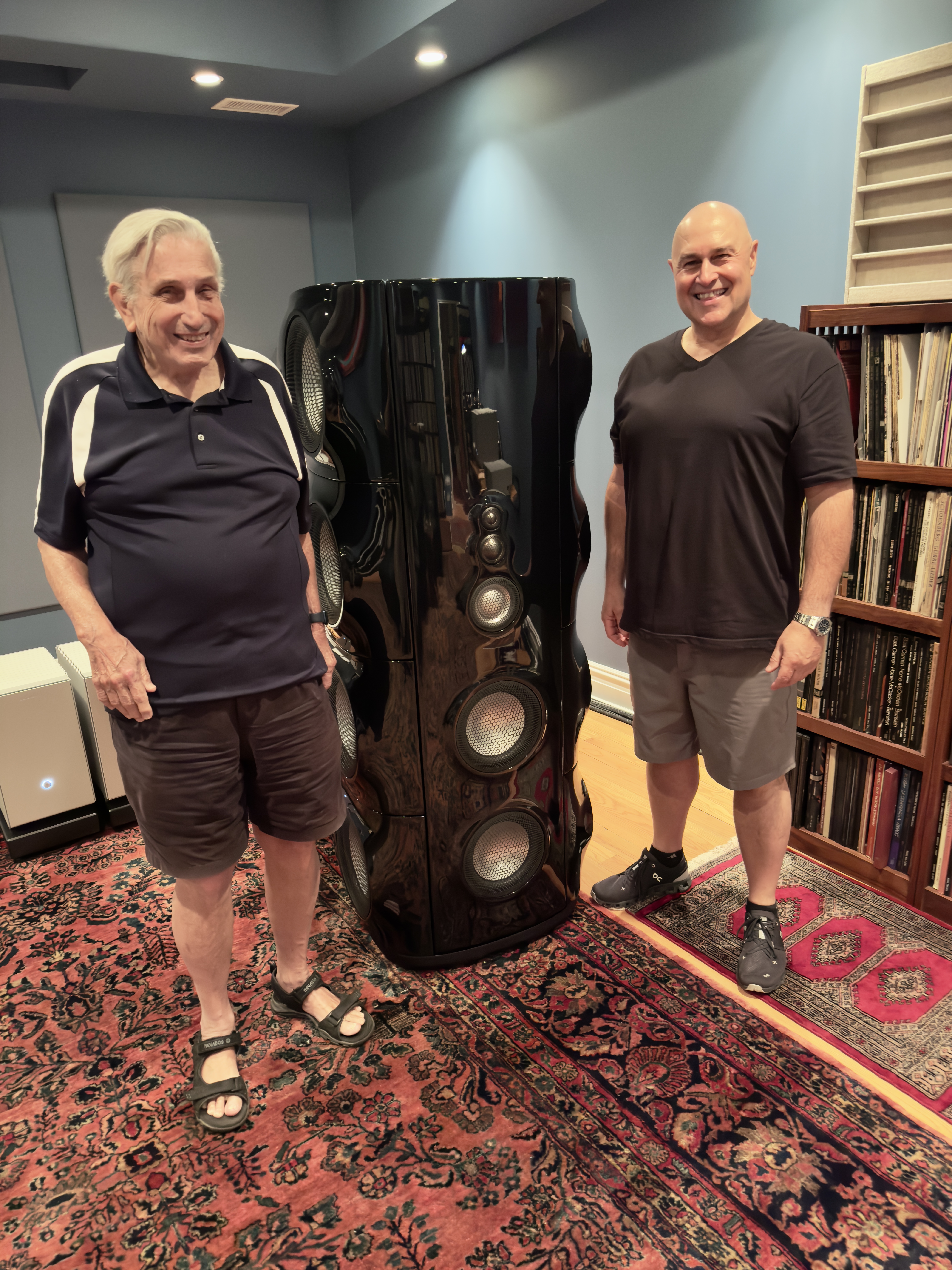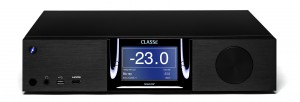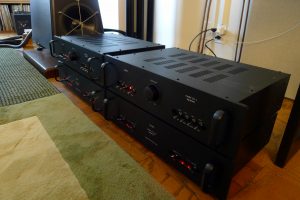World Premiere Review! I found myself often thinking of Van Morrison's terrific tune "Cleaning Windows."
Review By Dr. Jules L. Coleman
With this article, Positive Feedback continues its content-sharing relationship with Enjoy the Music. Dr. Jules L. Coleman shares his thoughts about the Wells Audio Commander Level II Tube Line Stage. Read, and learn....
Dr. David W. Robinson, Editor-in-Chief
For much of my life I tried my hand at playing guitar—with little, if any, success. Truth be told, early and often friends and family—several of whom are professional musicians—encouraged me to abandon my efforts. Ultimately, fear of being friendless and homeless carried the day, and my nascent, if not burgeoning, career came to a screeching halt. This tragedy notwithstanding, my love of music has continued to grow unabated. Like the majority of you, I love listening to music, engaging it, getting to know and appreciate it for its artistry as well the narrative content of the music, and where present the lyrics.
Frankly, though a lover of all manner of pop, rock, jazz, and the blues, the better narrative is almost never contained in the lyrics. Engaging and understanding the art and the content (which are of course best when appropriately interwoven and mutually supportive) are skills that must be nurtured and developed. Hopefully over time, my love and appreciation has deepened and managed to keep up with (or at least remain within shouting distance of) my enjoyment of and passion for listening. If so, that is thanks to the help of a number of artists and more sophisticated listeners, as well as extensive reading and lots of listening.
I especially love listening to live music, and I presume, perhaps mistakenly, that most of you do as well. Which is not to say that I don't enjoy listening to recorded music. After all, some live performances are forgettable at best; others rise to criminal mischief or at least civil nuisance. Sometimes the listening venues are awful, the audience badly and distractingly behaved, the musicians listless and uninterested.
It is worth noting that the experience of listening to recorded music is subject to the very same variables (and others as well): venue (e.g. the listening room, car, or elevator), the behavior of the audience (many of us, me included, grow restless from time to time, jump up from our seat to change discs or channels mid-song, while others can't resist talking above the music) and sit through listless performances now and again. In short, listening to recorded music can at times be preferable to listening to a live performance; the experience is subject to many of the same (or similar) distractions and variables that can upend the experience; and both listening experiences can lift the soul and elevate the mind.
Recorded Versus Live
Still, rarely, if ever, can listening to recorded music be mistaken for live music—and certainly not by anyone with a good ear and a fair bit of experience listening to both.
I know we have all read reviews in which the author reports that while preparing coq au vin, Lobster Newburg, or some other noteworthy dish in the kitchen, they could swear they were listening to the London Philharmonic, George Clinton and P Funk, or Vampire Weekend playing live in their living (or listening) room. Many of us have probably been guilty of the same hyperbole. I certainly have (both with regard to the hyperbole and the self-congratulatory nod to my cooking skills—real and imagined.
It's not just that the London Philharmonic won't fit in most of our living rooms: crammed into one's living room, the orchestra would surely sound simply awful, not sublime. And George Clinton and Parliament Funkadelic are likely to rock the foundations of any home, and drive neighbors in your apartment building to call the police, bypassing the building manager altogether. The sounds you'd be hearing would be police sirens, not thunderous bass notes. And get real, Vampire Weekend ain't taking a gig at your place—or mine.
It's banal, but not uninformative, to point out that recorded music does not sound like live music. Banal because one kind of music is live, the other recorded. Da! Informative because recorded music necessarily is heard through a mediating artifact—a sound system of one sort or another. And a sound system in addition to being an artifact—that is, a human (or soon to be robotically) made instrument intended for a particular purpose (or purposes), in this case, playback of recordings of one sort or another—invariably introduces artifacts.
Nevertheless, there are moments and elements of recorded music playback that do sound enough like live music to fool even the most experienced and skeptical among us, which is just another way of saying that the audio playback system minimizes the artifacts it introduces into the experience. In my experience, systems built around horn loudspeakers stand the best chance of sounding like live music with respect to the dynamics of music—both macro and micro. For me, anyway, this is the central way in which horn loudspeakers are alive in the way no others are—quite apart from attributes other speakers or systems have, and failings horn loudspeakers may possess. Other speakers can do dynamics great, but not present them as if they were live. Others no doubt will disagree.
Whatever goal or goals you believe an audio system should possess, whatever standards for its assessment you believe appropriate, the most important fact about any and all of them is that they introduce artifacts: non-musical intrusions into the experience of listening. For some people, these intrusions are sometimes welcome, even if often, not. For others, they are never welcome. Why welcomed? Why not?
For some listeners driving in cars, the artifacts that distort and extend lower frequencies, shaking not only the cars and other drivers, but the pavement as well, apparently increase the pleasure they derive both from driving—especially in public—and in listening to the music they like. For others the clear and concise images around instruments and performers contributes to an illusion of a live performance that enhances their listening experience. Chacon a son gout.
A Bit Of Discussion
I have had the good fortune of being part of a group of reviewers, recording engineers, and musicians who regularly listen to music together and discuss our own experiences at various venues, at high-end shows, and so on. Most of us are on something of a mission to figure out what to look for in an audio system; what to appreciate most, and why; what the standards for assessment should be, and so on. Two of us are philosophers by training, and our focus has been on the view that the experience of listening to recorded music involves a distinctive language that integrates the phenomenology of the experience with its evaluation: in our view similar to the way in which early abstract art demanded a language of its own before it could be fully accessed and assessed, before we could distinguish great abstraction from very good abstraction to junk.
For all his well-known pomposity, Harry Pearson stands apart from other reviewers for his commitment to developing such a language. One cannot read his reviews, often long and rambling (I am sure a similar charge can be fairly leveled against me, though my failing is likely arrogance, not pomposity), without appreciating that his real interest was in creating a way of speaking appropriate to the experience of listening to recorded music through a system of components designed for that very purpose. Unfortunately, too few reviewers have picked up on Pearson's efforts, and for many, all that remains is his famous formulation of the credo of the Absolute Sound: roughly, that the proper aim of an audio system is to reproduce accurately the sound of real instruments in real space.
There are so many alternative plausible goals of an audio system, and therefore so many plausible standards by which an audio system should be assessed, e.g. fidelity to the recorded input, create an aesthetic experience that is distinctive of (perhaps unique to) music, and more. On the other hand, Pearson's credo calls attention to the fact that a good or successful audio system minimizes, or reduces as much as possible, the introduction of artifacts that to varying degrees misrepresent musically significant attributes—from dynamics to tonality to timbre to the fact that real music takes place in space. And space has density, dirt, and weight. I have yet to get over the infinite blackness of the background that most CDs present. Nothing in real life—not the spoken word or a symphony orchestra—sounds like the way they sound on a CD. Real spaces are not infinitely black, weightless, noiseless and lifeless backgrounds to any form of human communication or interaction of any sort.
One measure of a really fine audio system, or audio component, is the extent to which it lacks artificiality. When we describe a component, a system, or even just a listening experience as bringing us closer to the music, we are, at least in part, pointing to a meaningful absence of artificiality, of non-musical, and in some cases a-musical distractions. When individuals talk about the speakers in their system disappearing, often they are saying that box induced artifacts are negligible or removed altogether.
Others often describe what I am calling artifacts as colorations. The problem with this term, by my lights, stems from the fact that the term coloration is typically contrasted with neutrality: a system that lacks coloration is neutral. This is doubly misleading. Whereas fairness is a virtue, neutrality may or may not be. Certainly, remaining neutral—declining to take sides—in the face of grave injustice is more vice than virtue. Secondly, in many instances adding color augments an experience by providing nuance, texture and context to it.
For years I lived with a reference system built entirely around Shindo. The system featured a TT source and horn loudspeakers at either ends of the chain. It would be foolhardy to claim the system lacked color. It exhibited a distinctive voice, and one I loved. Other truly fine systems just sounded different to me; not necessarily worse, or better: just different. Most were less immediate, textured, resoundingly alive, or dynamically realistic.
Interestingly, it did not take me long to realize that I could not do justice to other electronics if I were to review individual pieces—full function preamps, line or phono stages, and amps—in that system. The voice of the system was so familiar to me. Every time I put another individual electronic piece in and took my reference piece out, things changed, and more often than not, in a big way. I couldn't always say how things changed, but I was confident I was asking a piece of equipment to play along with other components that had played together for a long time and knew one another's moves. As a result, I confined my reviewing to sources and less often to speakers.
Here's A Thought Or Two About Reviewing
All of which got me thinking more about reviewing, the nature of a reference system, and the difference between reviewing as a form of scientific third party-research, focusing on investigation and excavation, and as a form of first-party engagement with a way of presenting recorded music. The languages of first and third party perspectives are different. This is a well-known feature of many of the social sciences. Roughly, it comes across as the difference between social scientists who seek to emphasize the science in social science, and those who emphasize the social: those, crudely, who scientize and those who humanize.
In time I have come to see audio reviewing as falling into three categories: reviews that are primarily scientific, with priority given to the third person perspective, those that report the reviewers personal experience, usually, immersive when favorable, strangers-in-the-night-like (exchanging glances) when less so; and others that integrate both. The latter are the most interesting to read, in part because they tend to fall into two diverse categories: those who explain why you shouldn't like the system given the numbers, and those who explain why you should like the system (even if the numbers suggest that perhaps you shouldn't).
In looking for a new reference system, with my wife and I planning a change of locations to a smaller urban digs—having resisted the opportunity to join the Coalition of the Willing, we have instead signed up for the Urban Migration of the Aging—I find myself looking for components that are pretty hard to come by in my experience: those that are both tools for investigation and excavation, and those that open the door to immersive engagement. Equipment that allows you to see what the rest of your system brings to the table, while encouraging you to dance on that very table. In this search, count me as lucky, because the very first piece I have reviewed with this in mind fits the bill to T.
Which brings us to the Wells Audio Commander (Level II) Tube Line Stage. It's a mouthful, but I'm betting it's a name you'll be hearing often over the next few years.
The Wells Audio Team: Jeff Wells And Scott Frankland
The Wells Audio Commander is the brain child of Jeff Wells and Scott Frankland. Jeff has been in the retail and design side of the audio business for over two decades, founding Wells Audio nearly a decade ago. Scott Frankland is something of an underground legend in audio circles. He is the 'F' in the legendary MFA preamps: the brilliant bargain Magus Series, A, B, and especially C. For friends looking to get into audiophilia—and tubes—at a reasonable price point, the MFA- Magus C along with Roger Modjeski's RM amplifiers were my go-to recommendations. It wasn't the quietest system, but together the two pieces formed a musical heart capable of pumping life into any small to midsize room system.
Frankland is also responsible for the MFA Luminescence preamplifier, which was not merely a great bargain, but a great preamp at any price. Again, not the quietest preamp I have ever owned, but certainly among the very best. Frankland is also responsible for the cult classic Wavestream Kinetics V8 amplifier. These days Frankland runs a high-end audio consulting firm in San Jose (the location of Wells Audio), and designs circuits, upgrades, and repairs existing audio components.
Wells and Frankland have teamed up on several components already in production, and others on the way. The former group includes the Innamorata amplifier, where Frankland helped clean up the original circuit, and the Commander line stage preamplifiers. Products closing in on production include a phono stage and DAC.
The team has produced a break-out product with the Commander Line Stage, and I would be shocked if continued collaboration does not yield comparable results.
My Review Process
My days with the extraordinary Shindo reference system taught me several things. First, that initial stages of reviewing should be holistic. What you are listening to is an entire system, and not just a single component. True enough, but what does that mean for a reviewer? To my mind, more often than not, when you place a new component in a reference system, you are not hearing the distinctive character of that component so much as you are hearing the difference, if any, that component makes to the sound of the system as a whole. The appropriate response in my book is to see, for example, if you are reviewing a preamplifier, if the manufacturer will send you the amplifier used to voice the preamplifier.
This is part of my view that for a review to be helpful the reviewer should listen to the component in the circumstances where the manufacturer / designer believes it shines or shows best. What is the value of reviewing Quad ESL 57s in a concert hall sized listening room sitting 30 feet away from them? Virtually nothing. It makes about as much sense as would listening to Cessaro horns in a closet. If I am listening to a preamp, I prefer to do my initial listening with the designer's amplifier of choice, and if possible, interconnect and cable choices as well.
Jeff Wells indicated that in his view, one of the distinctive features of the Commander preamp is that it works its magic with every amp he's listened to alongside, and he encouraged me to listen to the preamp with as many amplifiers as I could get my hands on. I took the challenge, but wanted to begin the review process with the Wells amplifier used for the majority of the voicing. Jeff kindly consented, and sent along an earlier version of the Innamorata solid-state amp. I asked Jeff to suggest interconnects and cables he liked. Among his favorites were those from Danacables, and he helped me source a full set of the appropriate interconnects for the review from an extremely accommodating Vinh Vu of Gingko Audio.
After an unhappy experience with FedEx, both the Innamorata and the Commander arrived at my home in CT unscathed. The packaging was extremely thoughtful, the products well protected, and able to withstand the rough treatment packages of audio equipment often receive from common carriers. The Dana interconnects and cables arrived a couple of weeks sooner, and I placed them in my current system to give them time to settle and for me to get an initial feel for how they interact with the components I am currently using.
Speaking of which, the current system consists of a Well-Tempered TT and arm employing both Ortofon and Dynavector cartridges, a heavily modified Resolution Audio CD player, reference quality PASS electronics including separate line and phono stage preamps with separate power supplies, and dorm room refrigerator size A250 monoblock amplifiers (Class A). Speakers include Magnepan 1.7i, and modified 3.7i with custom stands and more rigid frames. Other amplifiers on hand included the Merrill Audio Thor monoblocks. A month into the review process a pair of quite exceptional Sonus Faber Il Cremonese were delivered and set up by a team from Sonus Faber (review forthcoming). All interconnects and cables were on loan from Merrill Audio. Other available interconnects included variety of Stealth and Audience, which I have previously used only from the TT to the phono preamp. During the review I replaced all my usual interconnects and cables with those from Dana.
The Innamorata and the Commander replaced the Pass Electronics, but for the phono stage, in my system. The first month of listening was conducted exclusively from both sources feeding the Wells electronics combination which in turn fed both Maggies taking turns on a weekly basis. The switch from Merrill to Dana interconnects included a switch from balanced to unbalanced interconnects, and to bi-wiring of the speakers. The first week was spent tweaking speaker placement, switching cartridges in and out, listening at different times of day, with air conditioning on and off. When I felt I had the system initially dialed in, I sat down for three weeks of sustained listening focusing on the system holistically. After the first month, I switched out the Innamorata for the Pass Amps, redialed the system as needed, then listened for the purposes of getting a handle on the Commander itself. Another week thereafter was spent with the Thor replacing the PASS, before I returned to the Innamorata.
At that point, the Il Cremonese arrived, and I repeated the process over again: a bit less than a week initially dialing the system in; a month of listening with the full Wells electronics and PASS phono stage; a month listening with Commander and PASS set up, and finally a few days with the Commander and Thor set up. Then to complete the review process, I returned the system to its original state with the full Wells set up, removed the PASS phono stage and listened exclusively to CD. I would have added a week that would have involved replacing the Il Cremonese with the Magnepans but the weight of the former made doing so impractical.
I took notes throughout the process, and by the end, I was pretty confident that I had taken the measure of the Commander Line Stage. But there was a sense in which much of what I had done during the process was beside the point. Because at the end of the process, my overall instinct was to slow down publishing the review for a couple of weeks, if possible, for the simple reason that I was enjoying listening so much, I really didn't want to see the preamplifier go.
To jump to the conclusion. The Wells Audio Commander Level II Tube Line Stage Preamplifier has the very rare capacity to function both as a reviewer's tool for excavation and investigation—it will tell you all you need to know about your other components and the system as a whole—but it will do so while allowing you totally to forget that you are reviewing a component and encourage you to immerse yourself in the artistry of music, and to follow the musical narrative, and experience the distinctive aesthetic experience that music provides. I loved it.
Wells Audio Commander Level II Tube Line Stage
As the pictures within this review attest, the Wells Audio Commander Level II (CLII) is a lovely looking audio gear: modern, sleek lines, and very easy to read front and rear panels. Spacing between buttons on the front, and inputs and outputs on the back, make operation a cinch. The Commander also comes with a high-quality remote befitting the preamp's design and performance. Inside is a very well laid out circuit board, with all parts easy to reach in the event replacement becomes necessary or tube rolling strikes your fancy. Speaking of tubes, the CLII employs two dual triode 12BH7 tubes in the first gain stage and a second pair to switch polarity as needed. I found the polarity feature especially welcome. Unlike the Level I, CLII includes Bybee AC purifiers and Rike copper foil polypropylene paper-in-oil, output capacitors.
The net effect is that CLII is far and away the quietest tube preamplifier I have had the pleasure of listening to. When I say quiet, I am referring to the noise floor which I cannot detect at all. The result is a striking degree of free flowing musical information, high levels of information and clarity that renders music effortless and virtually free of distracting artifacts.
The back panel features in stereo pair balanced XLR input, three unbalanced RCA inputs, a HT bypass, and a tape loop. There are two variable RCA outputs, one fixed RCA output, and an XLR output as well. All in all, a well laid out, flexible and easy to use preamplifier. A damn fine command and control center.
But how does it sound? I can't tell you how it sounds, but I can tell you what it does when listening to music both in reviewer mode, and in listener mode, both with its Wells Audio compadre and with other amplifiers, plus different sets of speakers.
In reviewer mode, the preamp proved especially revealing of the sonic characteristics of its audio partners. I have had the big PASS amps in my system for several years now. I initially decided to obtain them when I anticipated reviewing a number of planar and electrostatic speakers. As Class A and with watts and current to spare, I figured they would mate sympathetically with demanding loudspeaker loads, as well as power hungry speakers. And they have. Ironically, while they are terrific amps and well suited to the most demanding loads, they have actually proven more adept with box speakers than I had expected they would be. They have proven to be absolutely splendid partners with the Il Cremonese, on which there will be much more to say in the review of those wonderful and physically commanding speakers in an upcoming review.
The PASS amps, however, have never been my absolute favorites with either the Maggies I have owned, or the simply spectacular SoundLabs 845 that I reviewed some time ago. I was never quite sure why until I put the PASS together with the CLII. With the CLII, the PASS sounded just a bit sluggish through both pairs of Maggies. I have always attributed a slight lack of fine-grained resolution to the fact that Magnepan frames are nowhere near as rigid as they can be; and listening both to a friend's 3.0 fully modified and rendered rigid and stable, and to the 3.7i I had in house, my hypothesis was confirmed. Nevertheless, with the CLII in the system, it was clear that not all of problem was owed to the Maggies less than stellar crossovers and frames. The PASS has almost everything you would want but the CLII showed that they fell short in ultimate speed and recovery time. Notes to a while to get there and hung around a bit longer than necessary.
This was in stark contrast to the musical presentation when the CLII was paired with the inexpensive (punching above its weight) Merrill Thor Class D amp and the Innamorata. Both presented as Formula I race cars by comparison when paired with the CLII. At the same time, the Thor came across as a bit rounded and warm and the Innamorata came off occasionally as slightly chilly on some music.
But it wasn't just the warts of associated equipment that the CLII revealed. When paired with the PASS and Il Cremonese, the music was glorious, luscious, refined, and the weight of the music was palpable. When paired with the Innamorata and Il Cremonese, the dynamics were explosive, and the highs textured. With the larger Magnepans, the images were large but appropriately balanced and defined. When paired with the Thor and the smaller Magnepans, the music was fast, present, and more fully satisfying than it had any right to be in a room that is really a bit too big for the 1.7i.
The Results Of Fastidious Auditioning
In short, the CLII provided a lens into the system's components. At the same time, it provided a window into the heart and soul of the music. It is, frankly, the first preamp I have listened to for a sustained period of time since I had to give up my precious Shindo reference system that is both a music lover and a reviewer's dream. You not only hear everything you need to, but allow yourself to fall in love again with everything that makes music so central to our lives not just as audiophiles, but as humans.
The Commander is almost entirely artifact free. That doesn't make it neutral—as in colorless. It is textured, nuanced, present and alive. It is as quiet a tube component of any sort as I have ever had the pleasure of listening to: on all music, all the time; from both digital and analog sources (though the PASS phono preamp deserves some cudos here as well). Listening to music through the Commander I found myself often thinking of Van Morrison's terrific tune (one of several dozen of course) "Cleaning Windows."
I could not recommend a line stage more enthusiastically! Listen at your earliest convenience; and if you are worried about spending money you may not have, then do so at your peril! It may be money you don't have; but it will be money well spent nonetheless!
Specifications
- Type: Vacuum tube stereo preamplifier
- Frequency Response: 2Hz to 20kHz
- Tube Compliment: Four 12BH7 triode
- Gain: 16dB
- Noise: -92dB, 35uv wide band
- Total Harmonic Distortion: 0.05% @ 1.5v
- Maximum Output: 10v
- Channel Separation: 82dB @ 1kHz
- Input Impedance: 25kOhms nominal
- Output Impedance: 200 Ohms
- Inputs: Three pair RCA unbalanced, one pair XLR balanced, one pair Tape-In, and one pair Home Theater Bypass via RCA.
- Outputs: Two variable RCA, one fixed RCA, and one pair variable XLR.
- Remote Control Functions: Volume, Mute, Polarity, H/T, Aux 2, Aux 3, Aux 4, XLR input.
- Commander Level II Includes: Bybee AC purifiers and Rike capacitors.
Commander Level II Tube Line Stage
Retail: $9000
Wells Audio
106 Bascom Court
Campbell, CA 95008
408.376.0861
Check Out Enjoy the Music for more articles and reviews




